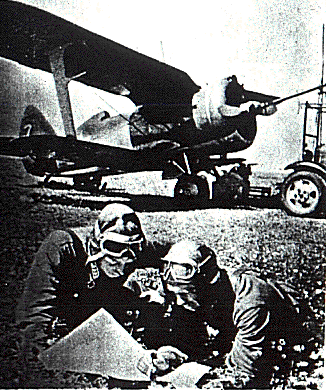The Internet Museum of World War II Aviation | home
I-15
Polikarpov's Bureau began work on the TsKB-3 in 1932, when the earlier I-5 was in full production. Unlike the I-5 the new fighter had a small lower wing and large upper gull wing curved down at the roots to meet the fuselage. As the I-15, the highly manoeuvrable fighter gained a world altitude record before serving in very large numbers (about 550) in Spain, where it was dubbed Chato (flat-nosed). It even served against the Finns and Luftwaffe, but by 1937 was being replaced by the I-15bis with a continuous upper wing carried on struts.
The ultimate development was the powerful I-153 Chaika, with retractable landing gear, either wheels or skis folding to the rear. Coming on line in 1938 some thousands served in the Far East, Finland and on the Eastern Front. Armed with four 7.62 mm machine guns, the I-153 boasted a speed of 275 mph. While heavier than the I-15 types, the I-153 was powered by a M-62 1,000 hp engine. Later sub-types had variable-pitch airscrews and drop tanks well outboard the lower wings.
I-153 had an incredible turn and roll rate , but had a serious spin problem, it was a highly manoeuvrable but unstable fighter. Sometimes, vibrations caused the strip covering the wing box to separate. the ailerons often vibrated and the exausts stacks frenquently disintegrated.
The I-153 was an anachronism, entering service at the time when the biplane had long since been eclipsed by the monoplane fighter.

